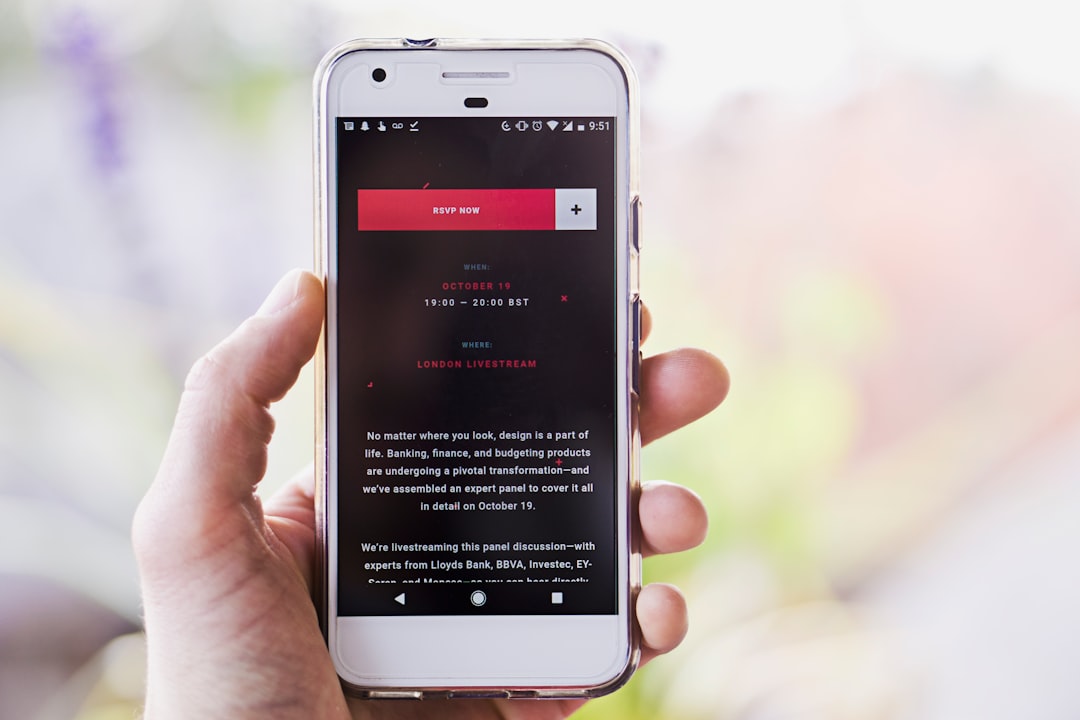Table of Contents
- Introduction
- Defining Storytelling in Email Marketing: Understanding Its Importance
- Building Emotional Connections: How Stories Resonate with Audiences
- Crafting Compelling Narratives: Techniques to Engage and Retain Readers
- Personalization Through Storytelling: Creating Tailored Email Experiences
- Utilizing Customer Success Stories: Incorporating Real-Life Examples
- The Role of Visuals and Multimedia in Storytelling Emails
- Measuring the Impact: Analyzing Engagement and Conversion Metrics
- Overcoming Common Challenges in Email Storytelling Implementation
- Conclusion
- Frequently Asked Questions
Introduction
Imagine a marketing strategy so compelling, it’s capable of transforming passive recipients into enthusiastic customers—all at the click of an ‘open’ button. In the world of digital marketing, storytelling has emerged as that transformative catalyst, particularly in email marketing. Gone are the days when a mere promotional email could ignite interest. Today, the stakes are higher, and the rewards potentially astronomical. Intrigued? Well, let’s delve deeper into why infusing narratives into your emails can captivate your audience’s attention like never before.
Here’s a glance at how storytelling in email marketing can boost your overall performance:
| Aspect | Impact |
|---|---|
| Engagement | Increases reader interaction with your content |
| Sales | Strengthens customer relationships leading to higher conversions |
Defining Storytelling in Email Marketing: Understanding Its Importance
Storytelling in email marketing is an artful technique that involves crafting engaging narratives to convey messages, foster connections, and drive action. By incorporating storytelling, marketers can transform mundane email campaigns into compelling experiences that resonate with audiences. At its core, storytelling in this context is about more than just selling a product or service; it’s about building relationships and trust with consumers by sharing relatable stories that align with their values and experiences.
The importance of storytelling in email marketing lies in its ability to captivate and engage recipients. Engaging narratives can significantly improve open and click-through rates as readers are naturally drawn to content that feels personal and relatable. Moreover, storytelling can evoke emotions, making the message more memorable and actionable. When done effectively, it establishes an emotional connection between the brand and the audience, often resulting in increased customer loyalty and brand advocacy.
To successfully incorporate storytelling into email marketing, it is essential to understand the audience’s needs, desires, and pain points. Crafting stories that reflect these elements ensures relevancy and increases the likelihood of recipient engagement. The narrative should be clear, concise, and authentic, using vivid imagery and relatable characters to draw readers in and encourage them to interact with the content.
Building Emotional Connections: How Stories Resonate with Audiences
Building emotional connections with your audience is a cornerstone of effective email marketing, and storytelling plays a crucial role in this process. Stories have a unique power to capture attention and convey messages in a way that resonates deeply with readers. By weaving narratives into your emails, you create a more engaging experience that goes beyond mere information delivery. This approach not only helps in grabbing attention but also in fostering loyalty among your subscribers. When stories reflect the values, challenges, and aspirations of your target audience, they feel understood and emotionally connected to your brand.
To effectively incorporate storytelling in your email marketing, it is essential to focus on authenticity and relevance. Start by understanding your audience’s interests and pain points, then craft stories that speak directly to these aspects. Personal anecdotes, customer success stories, or even behind-the-scenes glimpses can make your emails more relatable and memorable. Moreover, ensure that your stories align with your overall brand narrative and call to action, guiding the reader naturally to the next step you want them to take. By using storytelling strategically, you can transform your email marketing efforts into a powerful tool for building lasting relationships with your audience.
Crafting Compelling Narratives: Techniques to Engage and Retain Readers
Crafting compelling narratives in your email marketing is essential to engage and retain readers, creating a connection that goes beyond mere transactional messages. One effective technique is to establish a relatable protagonist—typically your customer or client—who faces a challenge or situation. This protagonist should reflect the values, needs, and experiences of your target audience, which helps readers see themselves in the story.
Another strategy is to employ vivid imagery and details that create a sensory experience. Descriptions that appeal to the senses help readers feel part of the narrative, as if they are witnessing events firsthand. This vivid imagery can be used to highlight the benefits and features of your product or service in a more engaging way.
Additionally, using a narrative arc—beginning, middle, and end—provides structure, ensuring your story is not just a collection of facts but a journey. This progression can evoke emotions like anticipation and satisfaction, encouraging recipients to continue reading and take action.
Finally, incorporating elements of surprise or unexpected twists can captivate your audience, prompting curiosity and increasing the likelihood of retaining their attention throughout the email.
Personalization Through Storytelling: Creating Tailored Email Experiences
Incorporating storytelling into email marketing can be a powerful tool for personalization. By crafting narratives that resonate with the individual recipient, you can create a connection that goes beyond transactional interactions. Personalization through storytelling involves tailoring messages that reflect the recipient’s interests, preferences, and past interactions. This approach not only captivates attention but also fosters loyalty and engagement.
To effectively weave storytelling into your email campaigns, begin by segmenting your audience. Understand their demographics, behaviors, and purchase history to create personas and story arcs that will appeal to them. Each email should serve as a chapter in an ongoing narrative that speaks directly to the recipient’s journey and needs.
Utilize data analytics to fine-tune your storytelling strategy, allowing for dynamic content that adapts to user behavior in real-time. Offering a personalized experience through storytelling makes the reader feel valued and understood, driving higher open rates and conversions. Ultimately, storytelling humanizes your brand and forges an emotional connection, turning simple emails into compelling narratives that captivate and inspire.
Utilizing Customer Success Stories: Incorporating Real-Life Examples
Utilizing customer success stories in your email marketing strategy is a powerful way to build trust and engage your audience. Real-life examples provide tangible proof of your product or service’s effectiveness and allow potential customers to see themselves in the success of others. By sharing detailed anecdotes and positive outcomes, you demonstrate your brand’s value in a relatable and convincing manner. This strategy not only humanizes your brand but also establishes credibility.
To effectively incorporate customer success stories, begin by identifying key narratives that align with your brand’s message. Reach out to satisfied customers for testimonials or case studies, focusing on those with compelling stories or impressive results. Ensure that their experiences are authentic, relatable, and provide a clear before-and-after transformation. Craft your emails to highlight these stories, using engaging copy and visuals that draw readers in. It’s vital to include specific details and metrics that highlight the impact your product or service had on their lives or businesses. This strategic approach not only enhances the persuasive power of your emails but also encourages direct responses and strengthens your overall email marketing efforts.
The Role of Visuals and Multimedia in Storytelling Emails
The role of visuals and multimedia in storytelling emails is crucial for capturing attention and enhancing the narrative. By incorporating elements such as images, GIFs, and videos, marketers can create a more engaging experience for the audience. Visuals help break up text, making content more digestible, and often communicate messages more effectively than words alone. For instance, a compelling image can evoke emotions or provide context that enriches the story being told.
Furthermore, multimedia elements can support the storytelling arc by illustrating key points or adding depth to the narrative. Videos and animations, for example, can demonstrate product uses or highlight customer testimonials more vividly than static content. Such elements not only serve as engaging complements to written content but also aid in reinforcing brand messages and improving retention.
To effectively incorporate visuals and multimedia into storytelling emails, it is important to ensure that they are relevant and add value to the overall message. Marketers should focus on creating a cohesive visual story that aligns with the brand’s voice and resonates with the intended audience. Additionally, considering the technical aspects such as file size and loading time is crucial to ensure a smooth and uninterrupted user experience across various devices.
Measuring the Impact: Analyzing Engagement and Conversion Metrics
To truly understand the effectiveness of storytelling within your email marketing, it’s essential to measure both engagement and conversion metrics. These metrics provide insights into how well your story resonates with your audience and drives them to take action. Analyzing open rates can indicate how compelling your subject line is, serving as the first point of engagement. Meanwhile, click-through rates reveal the effectiveness of your storytelling in enticing readers to explore further. Conversion rates are pivotal in assessing how many readers complete the desired action, such as making a purchase or signing up for more information.
Additionally, bounce rates and unsubscribe rates can highlight areas for improvement, indicating whether your content aligns with reader expectations. Use A/B testing to refine your storytelling approach, experimenting with different narratives and structures to see which version drives better engagement. Don’t overlook qualitative data, such as direct feedback or surveys, which can provide a deeper understanding of audience perception. With these insights, marketers can continuously refine their storytelling approach, ensuring emails remain relevant and impactful in driving desired outcomes.
Overcoming Common Challenges in Email Storytelling Implementation
Overcoming common challenges in email storytelling implementation involves a keen understanding of both the narrative and technical elements. A prevalent challenge is maintaining engagement throughout the email sequence. To counter this, it’s crucial to break down the story into digestible segments while ensuring each part retains emotional hooks. Incorporating cliffhangers or teasers at the end of each email can enhance anticipation and encourage recipients to look forward to the next installment.
Another challenge is balancing the promotional aspects with storytelling. It’s important to subtly weave in brand messages or calls to action without disrupting the narrative flow. Ensuring that the marketing aspect doesn’t overshadow the story enhances authenticity and trust. Personalization is often a stumbling block; thus, leveraging data and analytics to tailor the narrative to the audience’s preferences can significantly improve resonance.
Technical hurdles, such as crafting visually appealing and mobile-responsive emails, should not be overlooked. Utilizing tools that simplify design processes can aid in seamless storytelling. Finally, measuring the effectiveness of storytelling efforts is critical. Regularly analyzing open rates, click-through rates, and engagement metrics provides insights to refine and optimize future emails.
Conclusion
In conclusion, harnessing the power of storytelling in email marketing is an invaluable strategy for brands looking to boost engagement and drive sales. By understanding and implementing the core principles of storytelling, marketers can transform routine emails into compelling narratives that resonate with their audience. The art of storytelling fosters emotional connections, making content more memorable and actionable, which leads to a deeper relationship with the audience.
Effective storytelling involves crafting narratives that are authentic, relatable, and tailored to the interests and needs of the audience. By utilizing techniques such as personal anecdotes, customer success stories, and visual elements, marketers can enhance the storytelling experience, making it more engaging and memorable. Furthermore, the strategic use of data and analytics ensures that each email is personalized and impactful, ultimately leading to higher open rates and conversions.
Embracing storytelling in email marketing requires overcoming certain challenges, such as integrating promotional content seamlessly and maintaining engagement. However, with the right approach and continuous refinement through metrics analysis, storytelling can significantly elevate a brand’s email marketing efforts. Ultimately, storytelling not only humanizes a brand but also turns marketing emails into impactful tools for building lasting relationships that convert readers into loyal customers.

